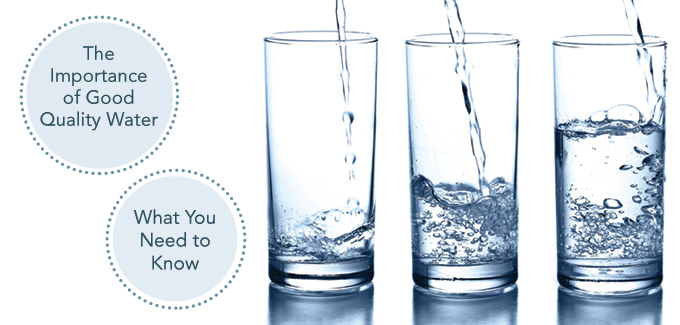
The Importance of Good Quality Water – What You Need to Know
by Colleen Cackowski
Most people who are interested in health pay attention to the quality of food that goes into their body, yet how many people concern themselves with the quality of water they drink? Our bodies are 70% water and that means that good quality water is at least twice as important as food for helping our bodies carry out their normal processes. In fact, your blood is 93 percent water and your muscles are about 75 percent water. Most people don’t think about the importance of water very much, but water is much more essential to life. As a rule, you can survive weeks without food, but only a matter of days without water.
Water is a universal solvent, meaning more substances dissolve in water than in any other chemical. The polarity of a water molecule helps dissociate ionic compounds into their positive and negative ions. What this means is that almost anything that comes in contact with water will have a fundamental effect on changing the water. There are pros and cons related to this dynamic. When you want to make a superfood smoothie for example, water-soluble ingredients will dissolve easily when blended and be readily available to your body. Conversely, when you package water in something like a plastic bottle, some of those plastic chemicals will likewise blend into the water, particularly in the presence of heat, ultimately causing health problems.
Water is a unique substance in that it picks up the energy signature of anything that is in it or around it. When you want to make an herbal or gemstone elixir, you can charge the water with the energy signature of the substances that are placed in the water and the water will take on a homeopathic quality related to the substance used. On the other hand, any other thing added to water without specific intention will also have an effect. Reflect on this: Most municipal water is recycled toilet water and, therefore, includes physical traces or energetic imprints of everything that has been in the toilets of the local area, and that is the information that most people put into their bodies.
Pure water is an essential nutrient, the basis of fluids in all living organisms, and a requirement to sustain life. Water needs to be clean, and free of toxins and microbes in order to prevent disease.
Tap Water vs. Bottled Water
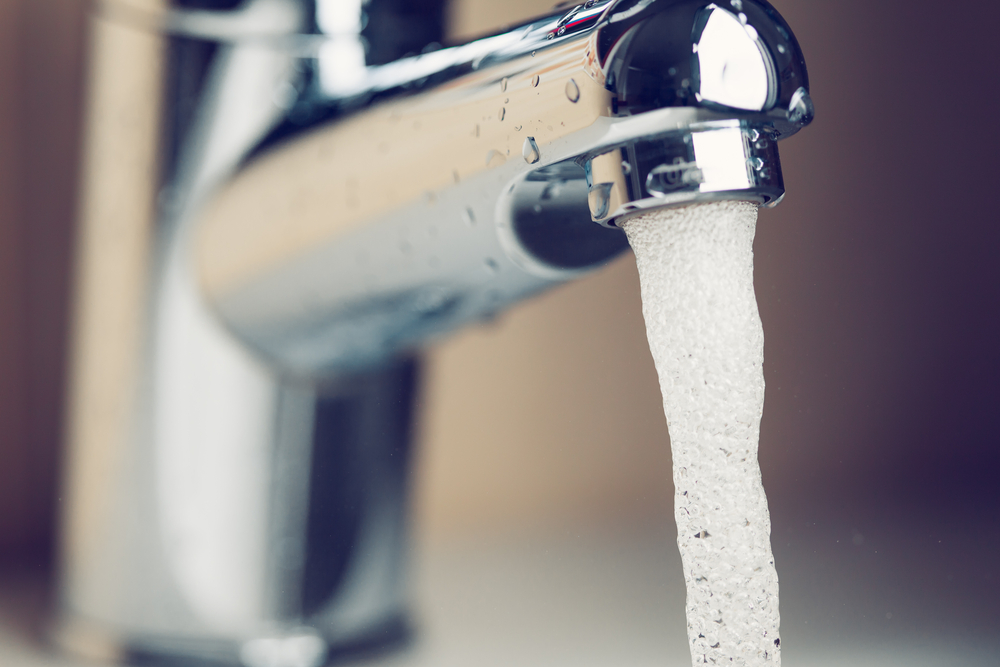 As an industrialized nation, you probably always felt lucky, or maybe you took for granted, the idea that we have easy access to good quality water, but what goes on behind the scenes? In order to make tap water potable, it must go through many stages of treatment. First, all dirt and other particles are removed through a coagulation process. Chemicals, such as alum are added to attract dirt particles, which sink to the bottom. The water is then passed through layers of gravel, sand, and charcoal to filter out even smaller particles. Chlorine is added to kill bacteria and microorganisms and it is placed in a closed tank or reservoir. It is then carried to our homes through a pipe system, which is usually antiquated and perhaps more than a little rusty.
As an industrialized nation, you probably always felt lucky, or maybe you took for granted, the idea that we have easy access to good quality water, but what goes on behind the scenes? In order to make tap water potable, it must go through many stages of treatment. First, all dirt and other particles are removed through a coagulation process. Chemicals, such as alum are added to attract dirt particles, which sink to the bottom. The water is then passed through layers of gravel, sand, and charcoal to filter out even smaller particles. Chlorine is added to kill bacteria and microorganisms and it is placed in a closed tank or reservoir. It is then carried to our homes through a pipe system, which is usually antiquated and perhaps more than a little rusty.
Tap water is required to be tested and a report is sent out each year indicating results of the tests. Despite efforts to ensure a clean supply of municipal water, often times, various investigations have revealed contamination in the water supply.
Legislatively, the Safe Drinking Water Act requires that over 100 pollutants and 91 chemicals are regulated via the EPA (Environmental Protection Agency) and Congress. Despite this regulation, city water in the United States often fails to meet minimum public health goals, and law enforcement of water pollution is unacceptably low.
Ingesting one of the primary additives in water, chlorine, whether it is by drinking it or absorbing it through the skin, is dangerous. A study in the journal Environmental Health Perspectives found chlorination disinfection byproducts in drinking water, such as trihalomethanes (THMs), could potentially contribute to premature birth, low birth weight, birth defects, fetal deaths, and other undesirable pregnancy problems. But that’s just one of hundreds of toxins that are present in our tap water.
A New York Times study found that American tap water can contribute to skin burns and rashes, erodes tooth enamel, and often contains heavy metals such as arsenic, lead, barium, and other toxic chemicals. Additionally, an investigation by the Associated Press of the EPA’s data found that 1 out of every 5 state schools violated the Safe Drinking Water Act during the past decade.
Bottled Water
 So after hearing the bad news about tap water, you may decide to opt for bottled water instead. When you pay retail prices for bottled drinking water in lieu of water from the tap, you might think for sure that you are getting a clean, quality product, that will quench your thirst and keep your cells clean and hydrated, right? Not necessarily…
So after hearing the bad news about tap water, you may decide to opt for bottled water instead. When you pay retail prices for bottled drinking water in lieu of water from the tap, you might think for sure that you are getting a clean, quality product, that will quench your thirst and keep your cells clean and hydrated, right? Not necessarily…
The federal government requires far less rigorous and frequent safety testing and monitoring of bottled water than for municipal drinking water. Labels can be misleading or even deceptive. Picturesque graphics may persuade us that bottled water is the purest drink around, but some of these labels can be seriously misleading. In one infamous case, water coming from a well located near a hazardous waste site was sold to bottlers, and at least one of these bottling companies labeled the product “spring water.” In another case, water sold as “pure glacier water” came from a public water system in Alaska.
What questions do you need to ask about your bottled water?
- Is this purified tap water? How is it purified?
- What source does the water come from?
- What contaminants are in the water?
Among the ten best-selling brands, most of them are owned by large corporations who manufacture processed food. The Environmental Working Group’s 2009 report indicated that out of 173 bottled water brands, 18 percent of fail to list the location of their source, and 32 percent do not disclose anything about the treatment or purity of the water. Aquafina, owned by Pepsi, states on its labels that their water comes from public (municipal) water sources. Nestlé Pure Life indicates whether the water comes from public, private, or deep well sources. Dasani by Coca-Cola acknowledges on its web site that it draws from local water. So why are we paying so much for this water?
The Food and Drug Administration (FDA) only regulates the brands that are sold across state lines—about a third of all brands sold. Carbonated water is exempt from regulation. Even with regulation, there is less than one full-time FDA employee who oversees bottled water. When the FDA tests for bacterial contamination, they are required to test only four empty bottles once every three months. Testing for chemical, physical, or radiological contaminants must happen only once a year, but since this category is considered a “low risk” priority, annual testing may not actually occur. The FDA passes the responsibility of compliance onto the manufacturer, saying that it is the manufacturer’s responsibility to ensure that their product conforms to laws and regulations.
Tap water costs about $0.002 per gallon compared to the $0.89 to $8.26 per gallon charged for bottled water and as much as 40% of bottled water actually comes from the tap anyway, which means you might be paying hundreds or thousands of times more for an illusion of purity.
How can you find out about the water you drink? Read your labels! Just like any food, you need to read the label to see what’s inside. It doesn’t guarantee that unscrupulous manufacturers are always honest, but at least you get an idea how conscious they are about what they are selling to you.
Environmental Costs
 What toll does the plastic water bottle industry take on the environment? Plastic bottle production in the United States alone annually requires about 17.6 million barrels of oil for energy. That’s enough to fuel over 1 million cars for a whole year. And worldwide bottling of water generates about 2.7 million tons of plastic each year.
What toll does the plastic water bottle industry take on the environment? Plastic bottle production in the United States alone annually requires about 17.6 million barrels of oil for energy. That’s enough to fuel over 1 million cars for a whole year. And worldwide bottling of water generates about 2.7 million tons of plastic each year.
The energy it takes transporting the water to stores, chilling the bottles, and collecting the empty bottles is the energy equivalent of filling each bottle 25 percent full with oil. Most of these bottles (about 86%) end up in landfills instead of being recycled. That’s about two million tons of PET plastic bottles piling up our U.S. landfills every year, and each bottle takes about a thousand years to biodegrade.
If they don’t end up in a landfill or recycling center, some bottles actually get incinerated and that process releases toxic byproducts such as chlorine gas and heavy metals into the air.
Furthermore, water companies can often legally draw the maximum amount of water they want, regardless of drought or water shortage, depleting aquifers and other groundwater sources.
What About Plastic in Bottles?
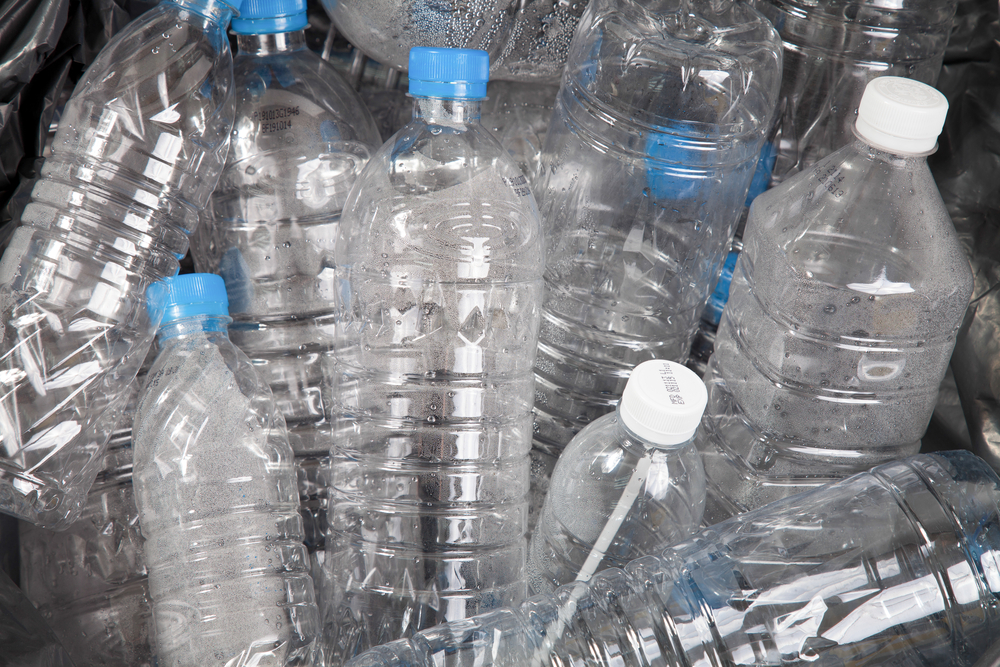 Most bottled water comes in polyethylene terephthalate bottles, indicated by “PET” or “PETE”, or a number 1 on the bottom of the bottle. When exposed to hot temperatures, this plastic can leach chemicals into the water, so make sure you NEVER drink your bottle of water after it has been sitting in the car on a hot summer day! The worst bottles on the market are the very thin plastic ones. A machine blows up the bottle and immediately fills it with water so the newly blown plastic has plenty of opportunity to offgas into the water itself, which means you get a good dose of plastic when you drink that water.
Most bottled water comes in polyethylene terephthalate bottles, indicated by “PET” or “PETE”, or a number 1 on the bottom of the bottle. When exposed to hot temperatures, this plastic can leach chemicals into the water, so make sure you NEVER drink your bottle of water after it has been sitting in the car on a hot summer day! The worst bottles on the market are the very thin plastic ones. A machine blows up the bottle and immediately fills it with water so the newly blown plastic has plenty of opportunity to offgas into the water itself, which means you get a good dose of plastic when you drink that water.
Antimony is a potentially toxic material used in making polyethylene terephthalate. Last year, German scientists found that the longer a bottle of water is left sitting around (in a store, in your home, in your garage), the more antimony it develops. High concentrations of antimony can cause negative physical symptoms such as diarrhea, nausea, and vomiting.
Bisphenol A, or BPA, is another problematic chemical often found in hard plastics like watercooler jugs and sports water bottles. A National Institutes of Health (NIH) committee agreed that BPA may cause neurological and behavioral problems in fetuses, infants, and children. A separate NIH-sponsored panel found an even greater risk, saying that adult exposure to BPA likely affects the female reproductive system, the immune system, and the brain.
Fresh Spring Water
In his book, Amazing Grace, David Wolfe comments on clean, fresh spring water:
The ennoblement of water in springs due to contact with the information of below-ground minerals and their eons of unknowable geological history provides you the chance to calibrate the true depth and meaning of purity, love, gratitude, and Mana. It is our perception that ice-cold living waters… embody the highest levels of health, beauty, and love that the Gaia organism can create.
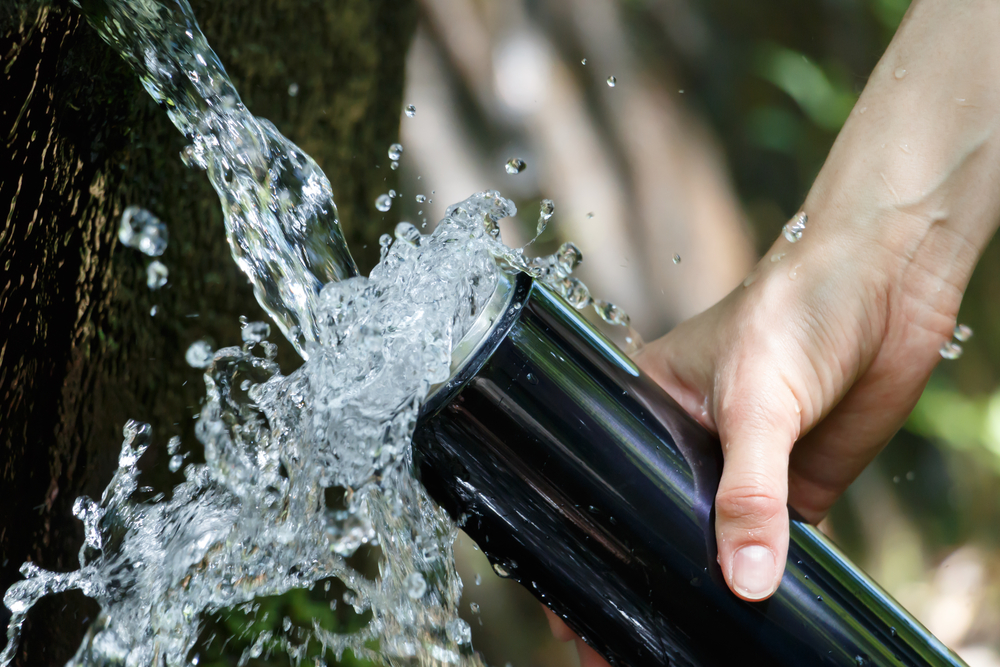 Pure spring water that comes straight out of the earth opens doors for you and gives you a sensory perception of the Ormus elements. You can drink spring water, bathe in it, mist it and breathe it in, carry it with you in a vial, pray over it, or any number of things. All these methods of using spring water serve to amplify your perception of Mana. And in that moment of perception, you may perceive that all of a sudden you don’t even need the water anymore because you have received what our friend Peter the Gnome calls “the codes of light”. These are codes that you can, from that point forward, replicate inside each of your cells on your way to becoming a true knight of cosmic light. From there when you meditate you can meditate on that for a few moments because you have a cellular experience and now a memory of what water can be.
Pure spring water that comes straight out of the earth opens doors for you and gives you a sensory perception of the Ormus elements. You can drink spring water, bathe in it, mist it and breathe it in, carry it with you in a vial, pray over it, or any number of things. All these methods of using spring water serve to amplify your perception of Mana. And in that moment of perception, you may perceive that all of a sudden you don’t even need the water anymore because you have received what our friend Peter the Gnome calls “the codes of light”. These are codes that you can, from that point forward, replicate inside each of your cells on your way to becoming a true knight of cosmic light. From there when you meditate you can meditate on that for a few moments because you have a cellular experience and now a memory of what water can be.
So the ideal water is natural spring water, fresh out of the earth. Be careful though…just because water comes from a spring does not mean it is safe to drink. Over the past 30 years or so there has been so much development and ground contamination that water is not as safe as it was years ago.
Most springs are a good source of clean water. The Earth naturally filters and cleans these water flows while they are passing through the ground. The exceptions to the rule are usually when you find a spring in a populated area, where there are a lot of people or livestock around, in an area where there has been development and potentially hazardous chemicals dumped into the water supply, or where there is major industry nearby.
What is the Alternative?
We know that wild, fresh, clean spring water is the best water ever, but if that is not an option available to you, what should you drink?
If you do not have access to a good source of quality spring water, here are some suggestions to upgrade from the water you are currently drinking:
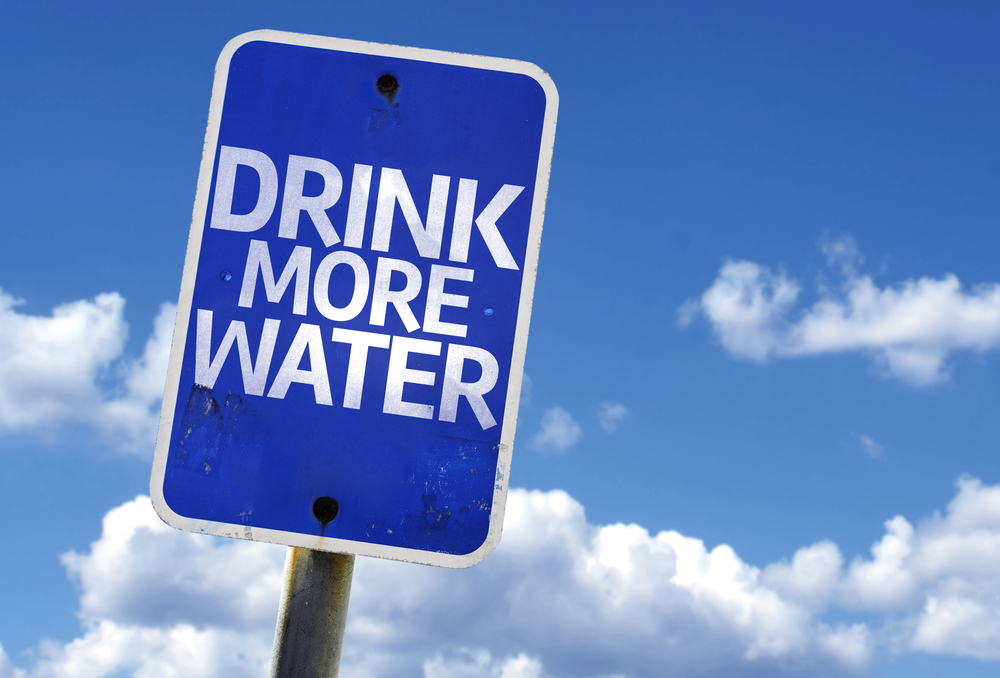 Get a good quality filter for your water. Research carefully… Many people think that a Brita or PUR filter is sufficient for tap water, but these popular brands do not actually remove many of the contaminants from the water. Rather, they cover up the smell from the chlorine and improve the taste slightly.
Get a good quality filter for your water. Research carefully… Many people think that a Brita or PUR filter is sufficient for tap water, but these popular brands do not actually remove many of the contaminants from the water. Rather, they cover up the smell from the chlorine and improve the taste slightly.
If possible, look for a filter that simulates living spring water, such as Pristine Hydro. Consider investing in a whole house filtering system so that you not only don’t drink in your toxins, you also don’t absorb them through your skin when you shower. At a minimum, purchase a shower filter that you can attach to your shower head to reduce contaminants that are present in the water. You will notice a difference in your skin and hair in a very short time!
Some people choose to use a reverse osmosis (RO) filter. An RO unit completely filters all natural and synthetic toxins, microbes, debris, and minerals. If you prefer to drink reverse osmosis or distilled water, make sure you add a little lemon or a pinch of salt to restore the electrolytes to the water, otherwise, the water is considered “dead” and over time will leach minerals from your body to help maintain balance.
If the water to your building is supplied by a well, it is probably free of many chemicals, but check the TDS (total dissolved solids) of the water. Well water is heavy because it is full of minerals from the earth. Test your well water every year. The recommendation is not to exceed 150 ppm, otherwise there is the potential to build up too much calcium and rock mineral deposits in your body and that can make your body feel old.
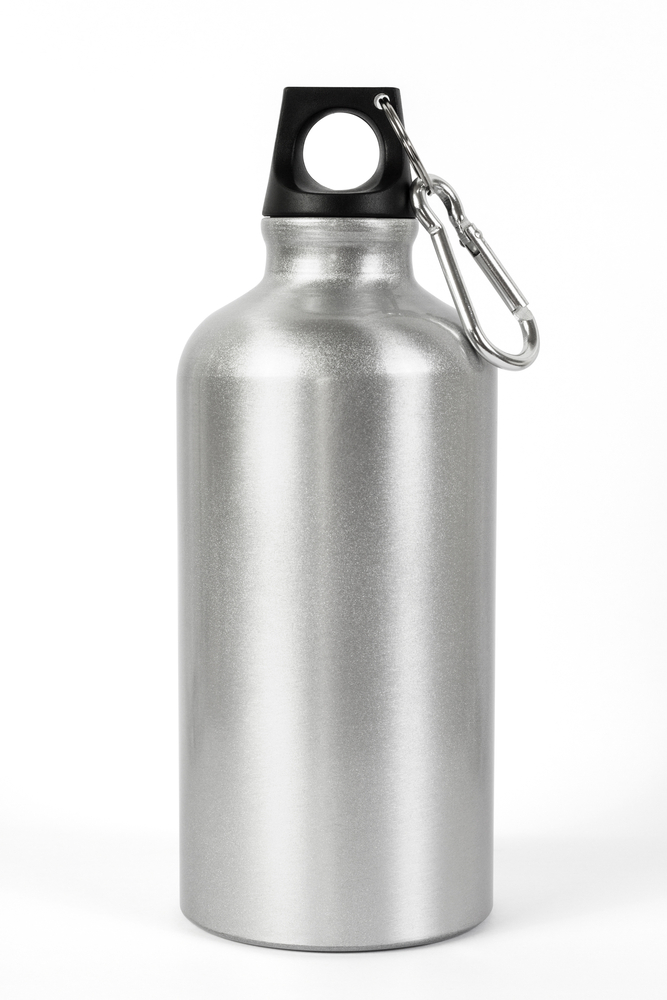 If you carry water with you, use glass or a stainless steel container rather than plastic. Reusing plastic bottles is not a good idea. There are many options available now for people to tote their water conveniently and safely. Make sure your water stays cool and is not exposed to heat or chemicals.
If you carry water with you, use glass or a stainless steel container rather than plastic. Reusing plastic bottles is not a good idea. There are many options available now for people to tote their water conveniently and safely. Make sure your water stays cool and is not exposed to heat or chemicals.
If you work in an office environment, think twice about the watercooler. If it’s made of polycarbonate, it has the potential to leach BPA, and it probably rarely, if ever, gets a good cleaning. That means bacteria can build up and place additional stress on your body’s immune system.
If you are going to buy bottled water, the best choice is to buy spring water bottled in glass. Castle Rock Water (http://castlerockwatercompany.com), Summit Spring Water (http://www.summitspringwater.com/), and Mountain Valley Spring Water (http://mountainvalleyspring.com/) are great choices. Most cities have a brand of spring water that can be delivered to your home.
How to Optimize the Water You Drink
 Ensure that you drink sufficient water. Better quality water is more hydrating and therefore you need less of it, but most people do not have enough good quality water and tend to be chronically a little dehydrated. When the body is dehydrated, it cannot operate at an optimal level and the importance of this is often underestimated. Dehydration slows down the metabolic processes, as well as limits the body’s natural healing capacity. When you drink enough quality water, you can reduce symptoms of allergies, enjoy greater mental clarity, and feel more energetic and alert.
Ensure that you drink sufficient water. Better quality water is more hydrating and therefore you need less of it, but most people do not have enough good quality water and tend to be chronically a little dehydrated. When the body is dehydrated, it cannot operate at an optimal level and the importance of this is often underestimated. Dehydration slows down the metabolic processes, as well as limits the body’s natural healing capacity. When you drink enough quality water, you can reduce symptoms of allergies, enjoy greater mental clarity, and feel more energetic and alert.
A good guide is to drink one-half of your body weight (lbs) in ounces of water. In other words, if you weigh 150 pounds, you should drink 75 ounces of water daily. If you are an athlete or live in a hot climate, you will need to increase this amount. Similarly, if you consume alcohol, caffeinated beverages, or other diuretic drinks, you will also need to replenish more because even though you are consuming liquids, those particular liquids will pull hydration out of the cells.
Drink your water room temperature. Ayurvedic tradition states that room temperature water is easier on your digestive system than cold water. Sip water slowly, but continuously, throughout the day rather than gulping it all down in one go. This gives your tissues more time to better absorb the hydration and you won’t find yourself needing to run to the bathroom as often.
When you drink good quality water, your body will notice the difference!


+ There are no comments
Add yours